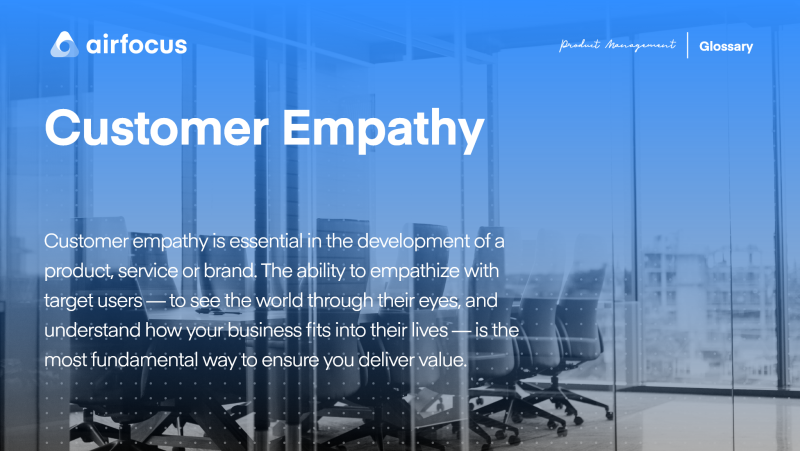Customer Empathy
What is customer empathy
Definition of customer empathy
Customer empathy is essential in the development of a product, service or brand. The ability to empathize with target users — to see the world through their eyes, and understand how your business fits into their lives — is the most fundamental way to ensure you deliver value.
As such, customer empathy is also a highly strategic commercial tool — if you can hook a buyer in, by creating a product that’s of genuine use to them in their life, then you’ve got a recipe for success.
How do you develop customer empathy?
To be empathetic, you need to view customers as real people.
This means understanding who they are, where they come from, why they need to perform a certain task, what obstacles they may face, how that may make them feel.
There are plenty of models and exercises to better understand, and empathize with, your target audience. Here are three of our favorites:
User persona
Far more than demographic information, a user persona helps to paint a semi-fictional portrait of who you are targeting with your product, brand or service.
True: you will include gender, age, lifestage, income, location, etc. within your user persona — but these details alone will not develop empathy. To add meaning to your user persona, you should also consider who this person really is. Not as a user group, but as a unique individual.
Think about their motivations in life, who they love, what their hobbies are, what they do for a living and why. By identifying their struggles, you can begin to walk through life in their shoes. This is also an excellent springboard for product ideation. If you believe your target user has a problem to solve, how could your business help them with it?
You may choose to give this user a name and a photograph to identify them by — the more personal you can be, the easier you’ll find it to empathize with them.
Customer empathy map
For when a user persona is a bit too freeform, a customer empathy map is a brilliant place to collect your thoughts.
Simply take an A1 piece of paper, and divide the page into six quadrants:
What does the user think and feel?
What do they do and say?
What are they hearing?
What are they seeing?
What are the user’s pains
And what are the user’s potential gains?
Then stick a photo of your target user in the center, and begin to work your way around the empathy map filling in the blanks within the context of your product area.
For example, if you are developing an app to help patients book doctor’s appointments, then you’ll consider a user’s healthcare experience.
Don’t rush this exercise — the more time you spend putting yourself in your user’s position, the more insightful your learnings will become. You should spend significant time in the ‘thinking and feeling’ part of the map, as this is where you’ll explore the internal dialogue of your target user. What do they think, that they may not outwardly say?
In the context of healthcare, perhaps this is: “I don’t think it’s fair that I always attend my appointments, but still have to wait weeks to be seen. And yet some people cancel last minute”.
From this learning, you’ve identified a problem — waiting weeks to be seen — and a potential solution — using the app to notify a patient of a last-minute cancellation, to see if they can fill the spot.
User research
Of course the most thorough way to developing customer empathy is to talk to customers through user research.
This could be through focus groups, one-to-one interviews or even digital surveys. When you’re searching for greater understanding, though, we’d always recommend qualitative, open-ended questioning, as opposed to data-driven quantitative methods.
Customer advisory boards can also help you mine for empathetic insights. But when it comes to communicating directly with users, nothing beats individual sessions.

General FAQ

Glossary categories
Create effective product strategy

Experience the new way of doing product management








